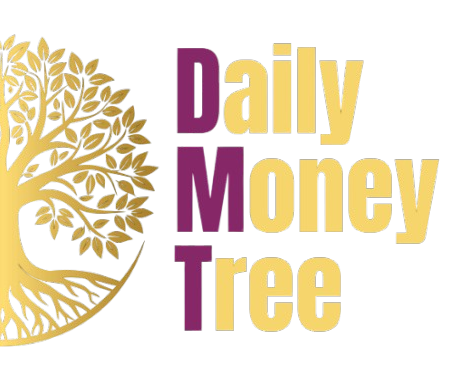Sales techniques are a fundamental tool for communicating and justifying the cost of a product. Knowing the sales techniques is very important, in fact, thanks to these you will be able to convey the information relating to the product or service you intend to sell in the best possible way. Or, again, you can optimally evaluate a purchase to be made. That’s why I suggest you continue reading this guide on sales techniques, where, as you can see for yourself, not everything is really what it seems.
How to determine the price of a product
Determining the price of a product is a delicate matter and often many entrepreneurs, especially at the beginning, have difficulty in establishing it. First of all, it is important to underline that the selling price of a product or service is not an immutable factor: it changes and evolves over time. The introductory price will therefore not necessarily be the final price. Having made this necessary premise, obviously there are formulas to calculate and establish the price.
One of the most common is the following:
- Make a list of the overall costs to be incurred for the creation and placing on the market of your product or service;
- Calculate the time taken to complete the activity, perhaps establishing an hourly rate;
- Break down fixed costs and variable costs;
- Take into consideration the cost due to promotional activities, any packaging etc .;
- Enter the profit margin you intend to make in the variables to calculate the price.
By following this process you can orient yourself to choose the best price at which to propose a product or service. However, this price will be destined to change and evolve over time and therefore, periodically, you will have to revisit it and see if it needs changes, especially in relation to current market dynamics and the target audience. Regardless of how you decide to set the price, remember that it must cover expenses and guarantee a profit, this is the guideline to follow.

Marketing strategies
Once the price of a product or service has been established, sales techniques must be used to justify it. Here marketing, with its countless strategies, comes to our aid. In fact, it is one thing to establish a price, another is to communicate it adequately so that the customer actually perceives its value and is willing to pay it.
Marketing is precisely the set of techniques aimed at making goods and services available to the user through the most suitable targeted strategies, capable of touching the areas from communication to distribution, proposing the best purchase price for the user who is , at the same time, profitable for the company. Although for insiders it is clear that marketing does not represent a sort of “deception” to make a product appear more appealing to the user, through pumped up or inaccurate information, not everyone knows what marketing really is and what the its purpose.
Some crap-gurus, unfortunately, use deceptive petty expedients that have perpetrated a marketing misconception. Let’s face it right away: in those cases, they are scams and not marketing. To the layman, precisely because of the crap-gurus, an incorrect message could arrive. Marketing, the real one, is not a trick to embellish a product or to deceive users, but it is a serious discipline that is based on studies and analysis of the data collected, then combined with ad hoc strategies in which creativity and inventiveness. Many factors then determine the success of a marketing strategy, such as the experience of campaigners. In any case, to better understand the usefulness of marketing, we must first examine the difference between real value and perceived value.
Real value vs perceived value
To understand the importance of marketing strategies, it is necessary to analyze the difference between two concepts:
- Real value.
- Perceived value.
Real value, also called market value, is the actual value on the basis of which a particular commodity is sold or purchased, whether it be a product or a service. Perceived value, on the other hand, is the value that the consumer himself attributes to that product or service. When the user thinks of a name, a brand, of an asset, he automatically attributes a value to it in a subjective and personal way based on what he perceives. This value also pushes the consumer to pay more for that particular asset regardless of its real value.
It is essential to specify, in fact, that real value and value perceived by the customer do not always coincide. For example, let’s think of hazelnut cream. This has real value. Now let’s think of Nutella … a whole different feeling, isn’t it? This is the value perceived by the user. In this sense, the brand and the marketing strategies implemented, able to excite, evoke memories or future projections, communicate a status symbol with which the customer wishes to be associated, play a fundamental role.
Furthermore, in an increasingly crowded context, it is no longer enough to offer a quality product or service. Brands, even the best and most established, constantly compete online and offline to earn the attention of the consumer. So, in today’s panorama, it is necessary to take an extra step: stand out and be able to communicate your uniqueness, in three words: unique value proposition.
Storytelling: a winning weapon to be exploited
But how can marketing come to our aid in developing effective sales techniques so that the user understands the real value of the proposed product or service, attributes a perceived positive value and realizes the uniqueness of the offer? In summary, how to use sales techniques to justify the cost of a product?
Storytelling is a widely-used communication technique that consists of knowing how to tell stories that can involve the target audience, leveraging emotions, memories, expectations, and desires. When a product or service is launched, storytelling has the function of attracting the attention of potential consumers, persuading them through stories and tales in which they can identify with or through which they can glimpse a better version of themselves and, therefore, be persuaded to take any action, such as a purchase. Keep in mind, in fact, that the user never buys a product or service, but a better version of himself. Telling engaging and persuasive stories is a very effective way to get that message across.
Personalize the experience
Equally important to justify the cost of the product or service is the personalization of the user experience.
In addition, it is a real treat for the customer who feels special, recognized among many. You know when the bartender remembers exactly what you have for breakfast and, with a smirk on his face, he asks you: “The usual?” How does it feel? Think about it and study how to apply the personalization of the experience within your current business or what you would like to develop.

Choices: essential and guided
However, the personalization of the consumer experience must not confuse and deceive, pushing the seller to offer multiple choices to users. The problem of offering too many choices is that of causing a phenomenon called: “Choice overload”. When the possibilities of choice are excessive, one gets stuck in a state of immobility, unable to make a decision.
Guiding the consumer in making the best choices with respect to their needs or desires is an effective sales method and can be implemented through more targeted techniques that accompany the user in his “customer journey”.
The Sales Process: how to sell a product
The sale is a complex operation that requires study and testing, but, above all, to be included within a structured process. You cannot expect to sell something just because it is of quality or, even worse, because you think it is “the best for the customer”. Selling “cold”, focusing only on the quality of a product or service, no matter how excellent they may be, will prove to be a sensational hole in the water. Or, if you get lucky, you still don’t know how to replicate success and you can’t go and scale your business.
Therefore, to sell a product, justifying the cost, it is necessary to structure a process and apply sales techniques. You can use a sales funnel or, again, study other techniques, but do not underestimate the importance of a functional process (to be constantly reviewed). Regardless of the sales process and the techniques applied, if you intend to sell, it is essential to study your target audience, collect data and form the identikit of your typical customer (buyer persona). In this way, you will propose valuable offers through which the consumer can achieve their aspirations, goals, and desires as well as basic needs.
The importance of sales strategies
By reading this guide, I hope you have understood that there is no single sales strategy that is always effective when applied to every product or service. Here what counts is flexibility and the ability to test by adapting, from time to time, the right sales technique. Remember: marketing is a valuable ally and can help you, but if you do not offer quality at the base, even the best marketing strategy will not work miracles. That said, give yourself the chance to experiment and test which strategies are more functional than the product or service you are interested in selling.
A very important piece of advice (often they don’t say it in video courses) is to observe what surrounds you: never stop looking around. Become your first object of study: which CTAs (Call To Action) make you take action? What works for you? With the same quality, for which products or services are you willing to pay a higher price? Acquiring this mindset, typical of the digital entrepreneur, will help you understand the many mechanisms to which we are exposed every day, but which sometimes go unnoticed. The topic is potentially unlimited and lends itself to analysis from many points of view, but what matters is the perspective that interests you.
Thanks for reading this article and I hope you enjoyed it.
Stay safe and stay tuned for more
S





